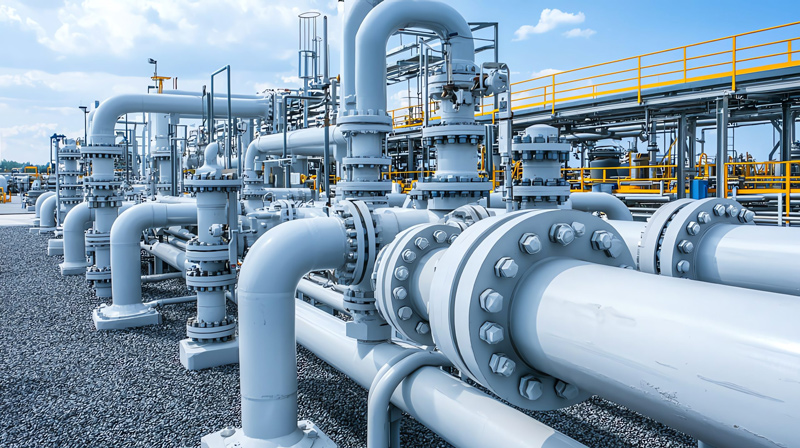The pipeline transport industry is a critical infrastructure sector that facilitates the efficient movement of liquids, gases, and slurries over long distances. Primarily used for hydrocarbons like crude oil and natural gas, pipelines also transport refined products (e.g., gasoline), chemicals, water, and emerging commodities such as hydrogen and carbon dioxide. This system offers a continuous, low-cost, and safer alternative to rail or road transport, especially for large volumes.
Pipes: Constructed from steel, plastic, or composite materials, designed to withstand pressure and corrosion.
Pumping/Compressor Stations: Maintain flow and pressure in liquid and gas pipelines, respectively.
Storage Facilities: Tanks and terminals for temporary holding.
Control Systems: SCADA (Supervisory Control and Data Acquisition) and smart sensors monitor flow, pressure, and leaks.
Valves and Safety Devices: Enable flow control and emergency shutdowns.

The valve types used in the pipeline transport industry are critical for controlling flow, pressure, and safety in liquid, gas, and slurry transportation systems. Below is a detailed overview of common valve types, their applications, and key considerations, synthesized from industry knowledge.
1. Gate Valves
Function: Designed for full open/close operations to allow or block flow. They are not suited for throttling.
Applications: Widely used in long-distance oil and gas transmission pipelines for isolation during maintenance or emergencies.
Material: Often made of carbon steel or stainless steel.
2. Ball Valves
Function: Provide tight sealing with a rotating ball mechanism. Ideal for high-pressure systems.
Applications: Common in natural gas pipelines and refined product transport due to their reliability and low leakage risk.
3. Check Valves (Non-Return Valves)
Function: Prevent backflow by allowing unidirectional flow.
Applications: Used in pump stations and compressor facilities to protect equipment from reverse flow damage.
Variants: Swing check valves and lift check valves.
4. Butterfly Valves
Function: Use a rotating disc to regulate flow. Lightweight and cost-effective for large-diameter pipelines.
Applications: Water transport, slurry pipelines, and low-pressure gas systems.
Material: Available in cast iron, stainless steel, or lined with polymers for corrosion resistance.
5. Globe Valves
Function: Adjust flow rates via a movable plug and stationary ring seat. Suitable for throttling.
Applications: Refineries and chemical plants for precise flow control.
Design: Often paired with actuators for automated systems, such as pneumatic conveying solutions.
6. Pressure Relief Valves
Function: Automatically release excess pressure to prevent pipeline bursts.
Applications: Critical in high-pressure gas and oil pipelines.
7. Plug Valves
Function: Similar to ball valves but with a cylindrical or conical plug. Used for on/off and diverting flow.
Applications: Slurry transport and corrosive fluid handling.